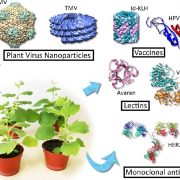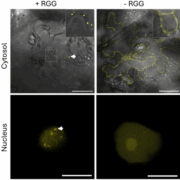Synthetic Biology: Improving Photosynthesis
Evidence suggests that crop breeding programs have not optimized photosynthesis making it an attractive target for improvement. The last few years have been an exciting time for photosynthesis research with several groundbreaking studies that have afforded huge advances in both our understanding of the process and ability to engineer improvements. As we learn more about how the molecular machinery of photosynthesis is assembled and repaired, as well as inefficiencies in process of capturing light and carbon, new targets are opening up to further boost crop yields.
I’ve compiled some some of the most notable achievements into a couple of tables below, the first contains studies that have used approaches to boost photosynthesis and the second advances in our fundamental understanding of the topic.
Many of the papers included have used approaches or techniques from synthetic biology, such as South et al. 2019, Salesse-Smith et al. 2018 and Kromdijk et al. 2016, which drew on mathematical modelling of photosynthesis by plant physiologists (e.g. Zhu et al. 2012; Walker et al. 2016), to make predictions about the effect of manipulating components of photosynthetic pathways and to design a more efficient process. These designs were then “built” by introducing DNA parts into plants, and tested by analyzing the impact on photosynthesis under both laboratory and field conditions. Researchers can now learn from these studies to further refine models as part of the synbio “design-build-test-learn cycle”.

Source: ONRL
There are also several examples of papers which align with the Nobel Prize winning physicist Richard Feynman’s classic quote (and oft repeated aim of synbio research) ‘what I cannot create, I do not understand’. Papers by Wang et al. 2019, Long et al. 2019 and Wunder et al. 2018 are fantastic examples of how a Synthetic Biology approach can also be used to answer fundamental science questions. The authors used ‘bottom-up’ experiments to provide insight into how cyanobacterial and algal carbon concentrating mechanisms assemble, testing conceptual models of these structures by trying to create cyanobacterial carboxysomes or an algal pyrenoid in orthogonal or in vitro systems, using only those genes predicted to be involved. By encountering problems along the way researchers are also able to refine models and identify areas where our knowledge is lacking.
A huge thanks to everyone who contributed suggestions on Twitter, particularly Avi Flamholz, who is a one man bibliography of for papers related to this topic! If there are any that are missing please let us know and I’ll add them.
Table I: Recent approaches to improve photosynthesis
| Achievement | Strategy | Reference |
| Improving CO2 fixation in C3 plants | Photorespiratory bypass | South et al. 2019 |
| Improving CO2 fixation in C3 plants | Photorespiratory bypass | Shen et al. 2019 |
| Improving CO2 fixation in C4 plants | Overexpression of Rubisco and RAF1 | Salesse-Smith et al. 2018 |
| Improving CO2 fixation in C3 plants | Reassmilation of photorespired CO2 | Kaachra et al. 2018 |
| Improving light harvesting efficiency | Speeding up the xanthophyll cycle | Kromdijk et al. 2016 |
| In vitro fixation of CO2 | Carbon capture | Schwander et al. 2016 |
| Fixation of CO2 by E. coli | Carbon capture | Antonovsky, Niv, et al. 2016 |
Table II: Recent studies contributing to our understanding of photosynthesis
| Subject | Topic | Reference |
| Carboxysome assembly | Cyanobacterial carbon concentrating mechanism | Wang et al. 2019 |
| Carboxysome assembly | Cyanobacterial carbon concentrating mechanism | Long et al. 2018 |
| Carboxysome assembly | Cyanobacterial carbon concentrating mechanism | Rotskoff et al 2018 |
| Pyrenoid assembly | Algal carbon concentrating mechanism | Wunder et al. 2018 |
| Rubisco assembly | Carbon fixation | Aigner et al. 2017 |
Additional relevant publications that have contributed to our understanding:
Jaiswal, Damini, et al. “Genome Features and Biochemical Characteristics of a Robust, Fast Growing and Naturally Transformable Cyanobacterium Synechococcus Elongatus PCC 11801 Isolated from India.” Scientific Reports, vol. 8, no. 1 2018 (link)
Ungerer, Justin, et al. “Comparative Genomics Reveals the Molecular Determinants of Rapid Growth of the Cyanobacterium Synechococcus Elongatus UTEX 2973.” PNAS, Nov. 2018, (link) **highly recommended, very impressive research
Bennett, Doran I. G., et al. “Energy-Dependent Quenching Adjusts the Excitation Diffusion Length to Regulate Photosynthetic Light Harvesting.” Proceedings of the National Academy of Sciences of the United States of America, vol. 115, no. 41, Oct. 2018, pp. E9523–31 (link)
Dall’Osto, Luca, et al. “Two Mechanisms for Dissipation of Excess Light in Monomeric and Trimeric Light-Harvesting Complexes.” Nature Plants, vol. 3, Apr. 2017, p. 17033, doi:10.1038/nplants.2017.33.
Barenholz, Uri, et al. “Design Principles of Autocatalytic Cycles Constrain Enzyme Kinetics and Force Low Substrate Saturation at Flux Branch Points.” eLife, vol. 6, Feb. 2017, doi:10.7554/eLife.20667.
Jin, Shengyang, et al. “Structural Insights into the LCIB Protein Family Reveals a New Group of β-Carbonic Anhydrases.” Proceedings of the National Academy of Sciences of the United States of America, Dec. 2016, doi:10.1073/pnas.1616294113
Peña, Kerry L., et al. “Structural Basis of the Oxidative Activation of the Carboxysomal γ-Carbonic Anhydrase, CcmM.” Proceedings of the National Academy of Sciences of the United States of America, National Academy of Sciences, Jan. 2010, doi:10.1073/pnas.0910866107.
Eisenhut, Marion, et al. “The Photorespiratory Glycolate Metabolism Is Essential for Cyanobacteria and Might Have Been Conveyed Endosymbiontically to Plants.” Proceedings of the National Academy of Sciences of the United States of America, vol. 105, no. 44, Dec. 2008 (link)
Disclaimer: I am employed on the Realizing Increased Photosynthetic Efficiency (RIPE) project from which several of the highlighted papers have been produced.









Leave a Reply
Want to join the discussion?Feel free to contribute!